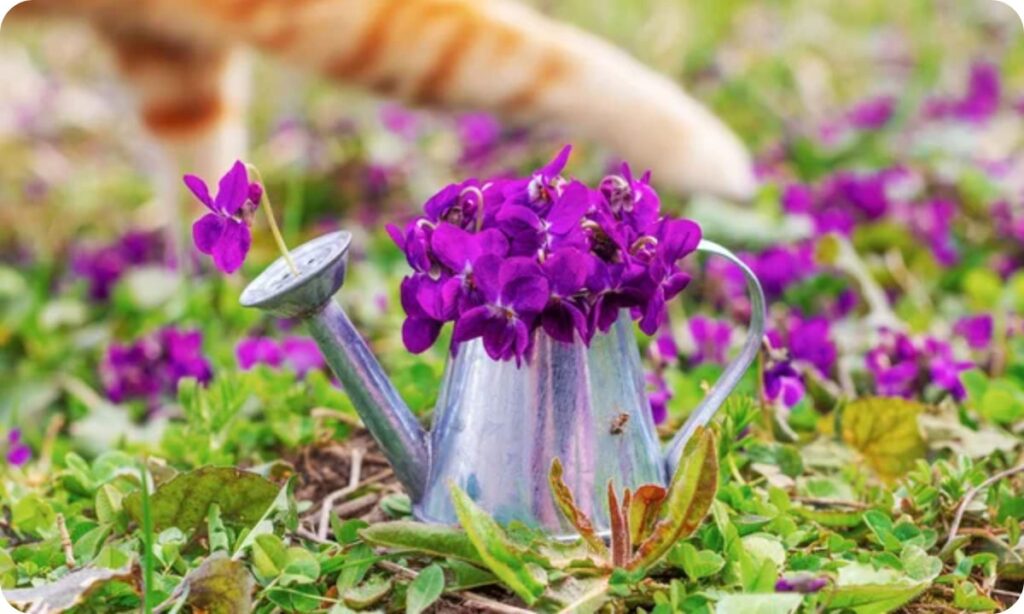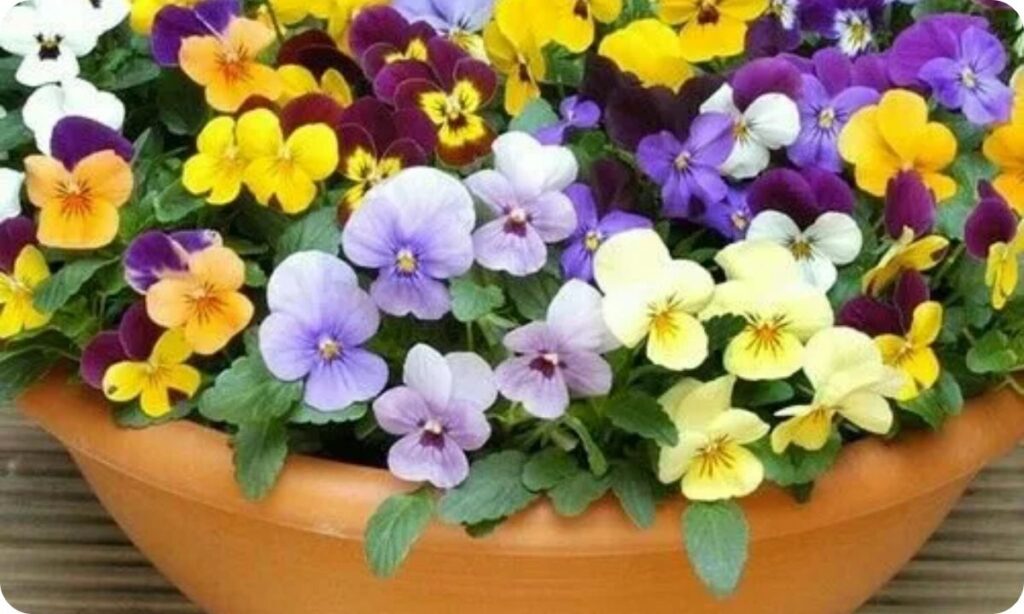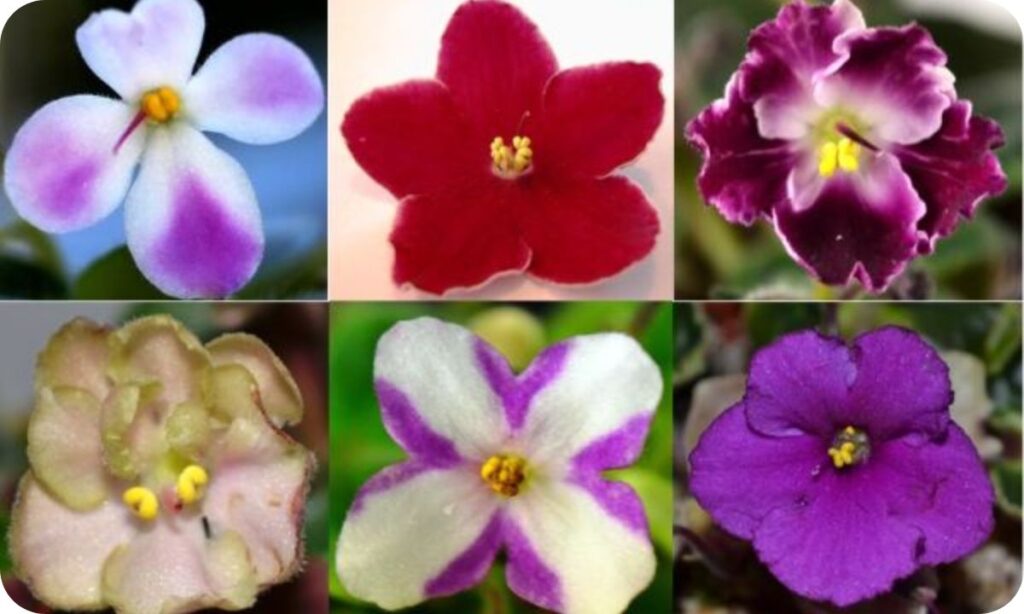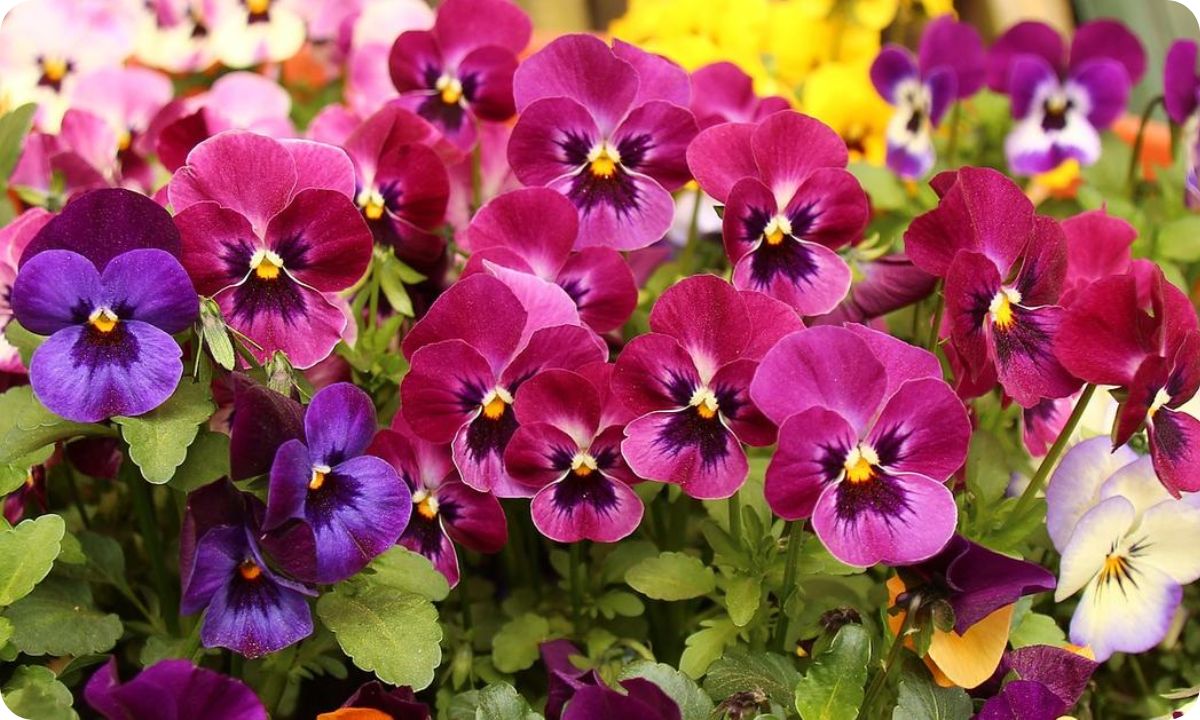Violet flowers are a timeless symbol of beauty and elegance, often admired for their vibrant colors and delightful fragrance. These small yet stunning blooms belong to the Viola genus, which includes hundreds of species found worldwide.
Violets are easy to grow and maintain, making them a favorite among gardeners of all experience levels. Whether used as ground covers, potted plants, or garden borders, violet flowers add a touch of charm to any landscape.
In this comprehensive guide, we will explore how to successfully grow and care for violet flowers. From planting locations to watering, fertilizing, and pruning, you’ll find everything you need to cultivate healthy and vibrant violet flowers in your home or garden.
Where to Plant Violet Flowers?
Choosing the right location is key to growing healthy violet flowers. Violets thrive in specific conditions that support their growth and blooming potential.
- Garden Beds: Violets perform well in garden beds with nutrient-rich soil and good drainage. They can be planted under trees or in flower borders.
- Pots or Containers: If you have limited space, violets are perfect for pots, containers, or hanging baskets. Just ensure the pots have proper drainage holes.
- Shaded Areas: Violets prefer shaded or partially shaded locations. Avoid direct sunlight for prolonged periods as it can damage their delicate leaves.
Tip: Plant violets in groups for a striking visual display in your garden.
Light Requirements
Violets have specific light preferences that must be met to ensure proper growth and blooming.
- Partial Shade: Violet flowers grow best in partial shade. They require 4-6 hours of filtered sunlight per day.
- Indirect Sunlight: Indoors, place violets near a window with indirect light. Too much direct sunlight can cause scorching.
Violets thrive in environments with dappled light, such as under trees or beside taller plants that provide natural shade.
Soil and Watering

The right soil and watering routine are essential to keep your violet flowers healthy and vibrant.
- Soil: Violets prefer loamy, well-drained soil rich in organic matter. A slightly acidic to neutral pH of 6.0-7.0 is ideal.
- Watering: Water violets regularly to keep the soil moist but not waterlogged. Overwatering can lead to root rot.
Watering Tips:
- Water early in the morning to allow excess moisture to evaporate.
- Avoid wetting the leaves to prevent fungal diseases.
Pro Tip: Use mulch around the plants to retain moisture and improve soil health.
Temperature and Humidity
Violet flowers are relatively hardy but prefer moderate temperatures and humidity levels.
- Temperature: Violets thrive in temperatures ranging from 60°F to 75°F (15°C to 24°C).
- Humidity: These plants appreciate moderate humidity. If growing violets indoors, consider using a humidifier or a tray with pebbles and water.
Protect violets from frost during winter by bringing potted plants indoors or covering outdoor plants with frost blankets.
Fertilizer and Pruning

To ensure healthy growth and abundant blooms, proper fertilization and pruning are essential.
Fertilizer
- Use a balanced, water-soluble fertilizer with equal parts nitrogen, phosphorus, and potassium (10-10-10 NPK) every 4-6 weeks.
- Avoid over-fertilizing, as it can lead to excessive foliage growth with fewer flowers.
Pruning
- Prune dead or damaged leaves and spent blooms regularly to promote new growth and blooming.
- Pinch back the stems to encourage bushier plants.
Tip: Pruning helps improve air circulation and prevents pest infestations.
Also Read This Blog: 10 Little-Known Facts About Dahlias that you need to know
Violet Flowers Flower Care Tips
Caring for violet flowers involves understanding their light, water, temperature, and fertilization needs. Here is a quick guide:
Light
Violets need 4-6 hours of indirect light daily. Avoid direct sunlight to prevent leaf damage.
Soil and Water
- Use well-drained, loamy soil.
- Keep the soil consistently moist but avoid overwatering.
Temperature and Humidity
Maintain temperatures between 60°F and 75°F and moderate humidity for optimal growth.
Fertilizer and Pruning
Feed violets every 4-6 weeks with a balanced fertilizer and prune spent blooms to encourage more flowers.
Types of Violet Flowers

There are various types of violet flowers, each with unique features and growing requirements. Below are three popular types:
Sweet Violet Flowers (Viola odorata)
- Known for their fragrant blooms and heart-shaped leaves.
- Commonly used in perfumes and culinary dishes.
- Thrive in shaded areas with moist, rich soil.
Dog Violet Flowers (Viola riviniana)
- A non-fragrant variety often found in woodlands and meadows.
- Known for their blue-purple flowers.
- Ideal for ground cover in gardens.
African Violet Flowers (Saintpaulia)
- Popular as indoor houseplants.
- Feature vibrant flowers in shades of purple, pink, and white.
- Require indirect light and consistent moisture.
| Type | Bloom Color | Preferred Location | Special Features |
| Sweet Violet | Purple, Blue | Shaded Gardens | Fragrant, edible flowers |
| Dog Violet | Blue, Purple | Woodland, Ground Cover | Non-fragrant, hardy |
| African Violet | Purple, Pink, White | Indoors, Windowsills | Houseplant, low-maintenance |
Are Violet Flowers Harmful to Humans or Animals?
Violet flowers are generally safe for both humans and animals. However, there are a few things to note:
- Edibility: Sweet violets (Viola odorata) are edible and often used in salads, syrups, and desserts.
- Pets: While most violets are non-toxic, ingestion of large quantities may cause mild stomach upset in pets.
Always supervise pets and children around new plants to prevent accidental consumption.
Frequently Asked Questions
How often should I water violet flowers?
Water violet flowers regularly to keep the soil moist but avoid overwatering, as it can lead to root rot.
Can I grow violets indoors?
Yes, violets, especially African violets, thrive indoors in indirect sunlight and well-drained soil.
What is the best fertilizer for violet flowers?
A balanced, water-soluble fertilizer with equal parts nitrogen, phosphorus, and potassium (10-10-10) works best.
Do violets need full sunlight?
No, violets prefer partial shade or indirect sunlight. Too much direct sunlight can damage their leaves.
Are violet flowers perennial?
Yes, most violet varieties are perennial, meaning they bloom year after year with proper care.
Conclusion
Violet flowers are a beautiful and versatile addition to any garden or home. Their vibrant blooms, ease of care, and adaptability make them a favorite among gardeners. By selecting the right location, providing adequate light, water, and nutrients, and maintaining optimal temperature and humidity, you can enjoy healthy and thriving violets throughout the year.
Whether you choose sweet violets, dog violets, or African violets, these delicate flowers will bring color and charm to your space. With proper care, violets will reward you with their stunning blooms and add a touch of elegance to your garden or home decor. Start growing violets today and experience the joy of nurturing these timeless flowers.

FAtima is a talented content writer and digital marketer with expertise in SEO, social media management, and online marketing.










